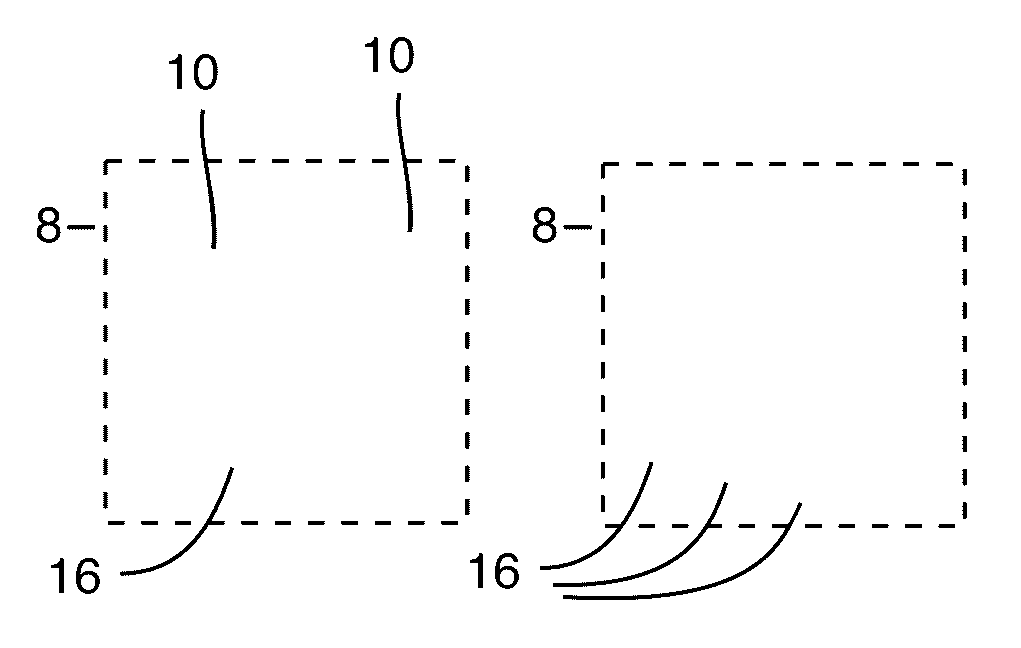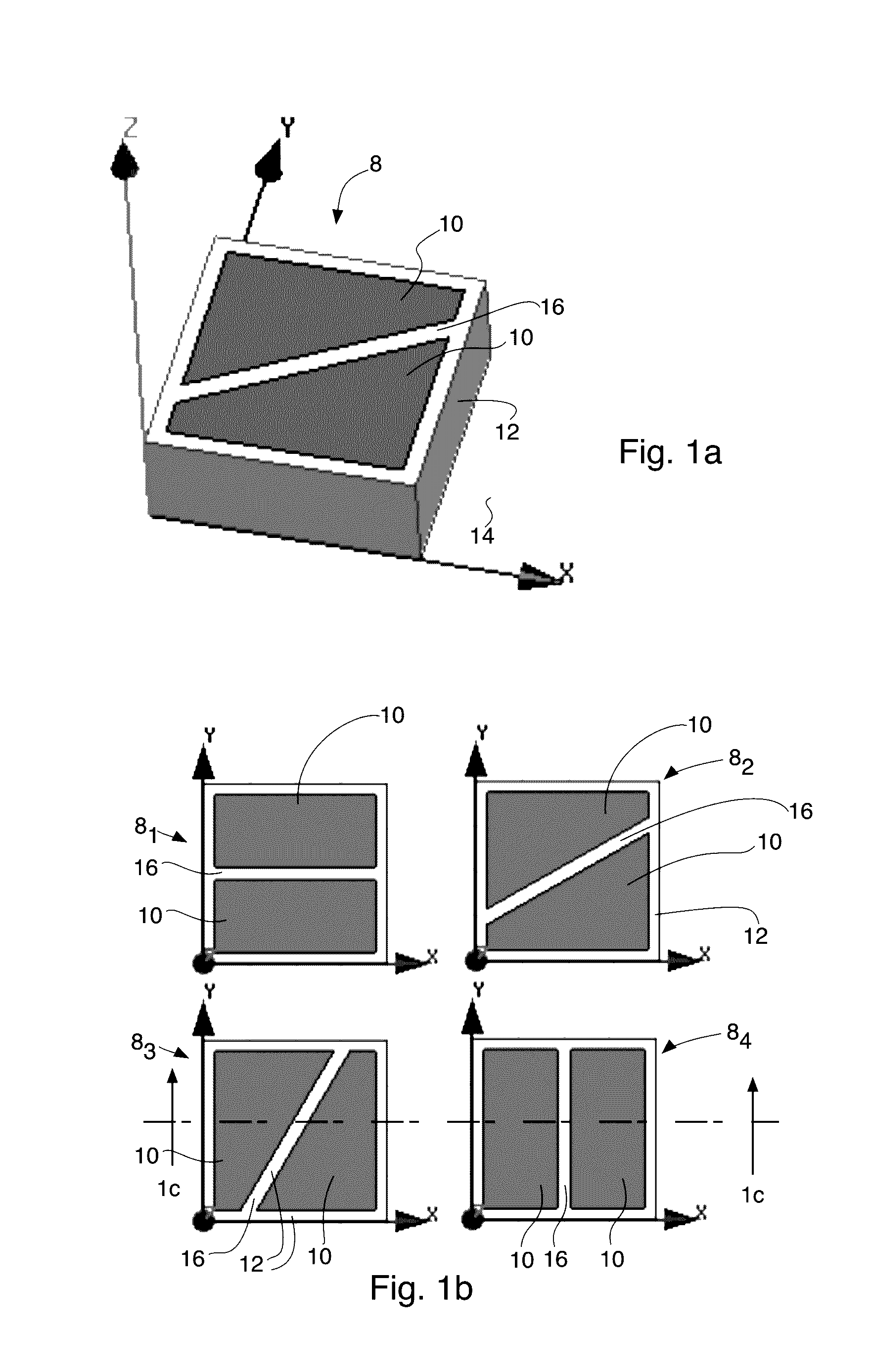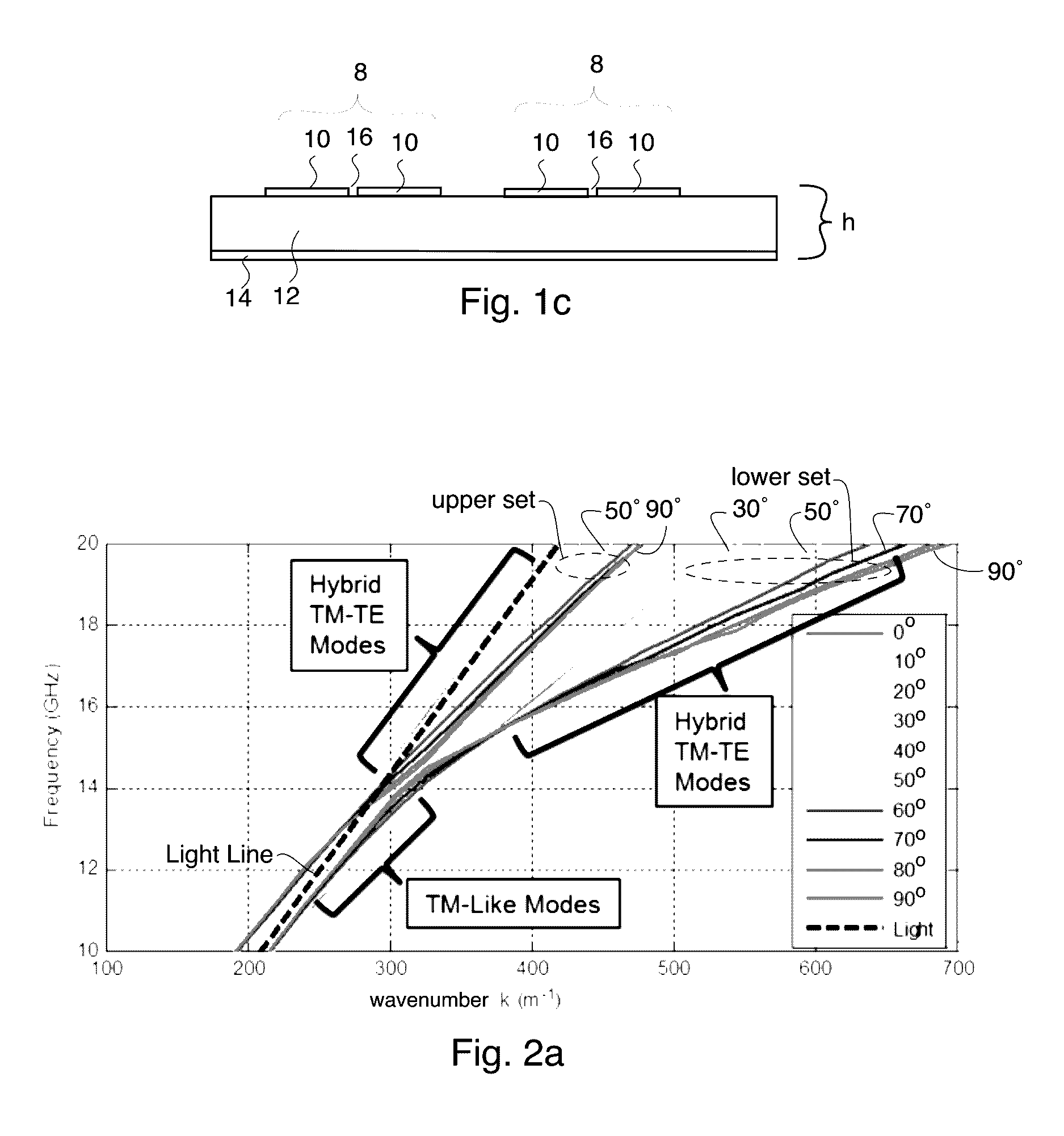Surface wave polarization converter
a polarization converter and surface wave technology, applied in the direction of antenna earthing, basic electric elements, antennas, etc., can solve the problems of no reference, no disclosure of polarization conversion, no suggestion or disclosure of a way to convert incident waves, etc., to achieve the effect of reducing (or increasing) coupling
- Summary
- Abstract
- Description
- Claims
- Application Information
AI Technical Summary
Benefits of technology
Problems solved by technology
Method used
Image
Examples
Embodiment Construction
[0035]In the following description, numerous specific details are set forth to clearly describe various specific embodiments disclosed herein. One skilled in the art, however, will understand that the presently claimed invention may be practiced without all of the specific details discussed below. In other instances, well known features have not been described so as not to obscure the invention.
[0036]The present invention discloses an electromagnetic transport medium or surface which can convert the polarization of surface bound waves between pure TE and TM polarizations, for example. The electromagnetic transport medium or surface is created by patterning metallic patches or plates 10 disposed on one major surface of a dielectric substrate 12. In the preferred embodiments, the dielectric substrate has a ground plane 14 disposed on its other (opposing) major surface.
[0037]The patches or plates 10 preferably utilize a sliced unit cell arrangement that was first presented in “Scalar a...
PUM
 Login to View More
Login to View More Abstract
Description
Claims
Application Information
 Login to View More
Login to View More - R&D
- Intellectual Property
- Life Sciences
- Materials
- Tech Scout
- Unparalleled Data Quality
- Higher Quality Content
- 60% Fewer Hallucinations
Browse by: Latest US Patents, China's latest patents, Technical Efficacy Thesaurus, Application Domain, Technology Topic, Popular Technical Reports.
© 2025 PatSnap. All rights reserved.Legal|Privacy policy|Modern Slavery Act Transparency Statement|Sitemap|About US| Contact US: help@patsnap.com



